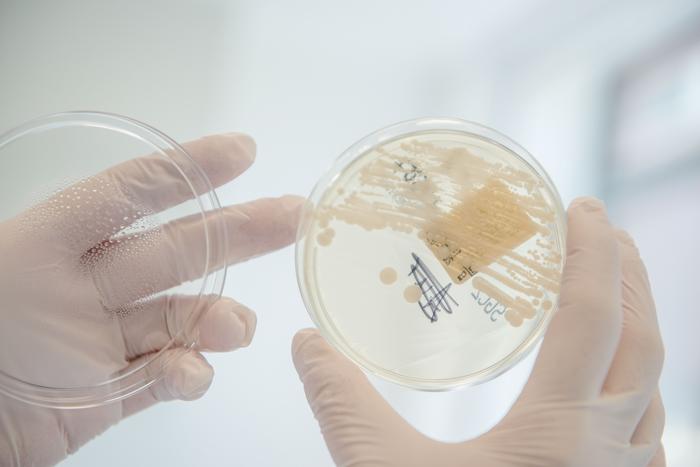Significant attempts 20 years ago

Credit: © RUB, Marquard
Significant attempts 20 years ago
The study focused on the protein peptide deformylase (PDF). Involved in protein maturation processes in cells, PDF is essential for the survival of bacteria. However, it’s found in both bacteria and human cells. “Some 20 years ago, significant attempts were made to combat PDF with antibiotic agents,” Raphael Stoll points out. “Yet, the original drug candidate, i.e. actinonin, had to be discarded for several reasons. One of the problems faced was the newly discovered human PDF, which was potentially associated with side effects. Still, further research was carried out to generate modified active compounds,” Hendrik Kirschner adds. As part of his doctoral thesis, he examined PDF in detail in the current study and analysed it from the perspective of structural biology using biomolecular nuclear magnetic resonance (NMR) spectroscopy and X-ray crystallography. These techniques enabled him to obtain a 3D structure resolved at the smallest detail. “This is the result of many years of collaborating with our colleague Professor Eckhard Hofmann,” Raphael Stoll says.
Active molecule is adapted and made more selective
“We can use these techniques to visualize surfaces and binding pockets of biomolecules and show that the binding of molecule to this protein is not static, but dynamic,” Hendrik Kirschner explains. The researchers noticed that there are two different binding orientations in the protein for a modified drug molecule: In addition to the orientation that is also present in human PDF, there’s another one that should, in principle, exclusively occur in bacterial PDF. “This prompts us to modify the drug molecule so that it favours the second binding orientation,” Raphael Stoll says. As a result, the antibiotic molecule could be rendered more selective. “It could provide this drug candidate with a second chance,” Hendrik Kirschner concludes.
Journal
Journal of Medicinal Chemistry
Method of Research
Experimental study
Subject of Research
Cells
Article Title
Toward More Selective Antibiotic Inhibitors: A Structural View of the Complexed Binding Pocket of E. coli Peptide Deformylase
Article Publication Date
4-Apr-2024



